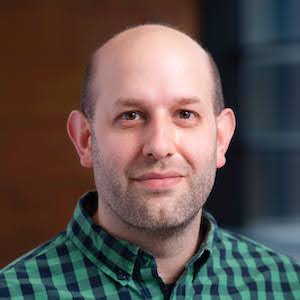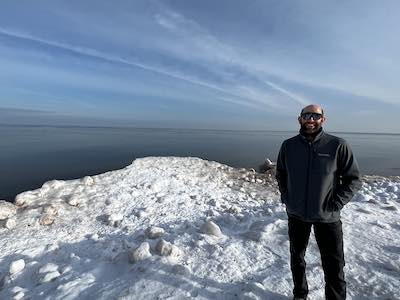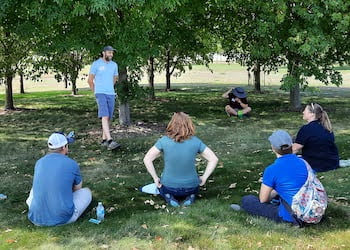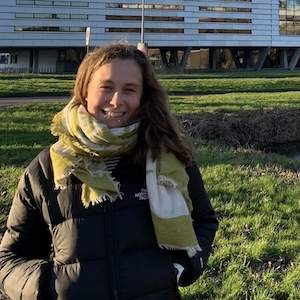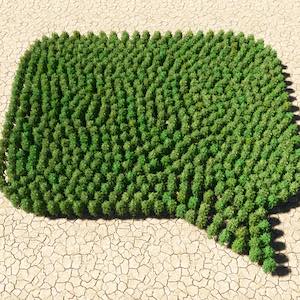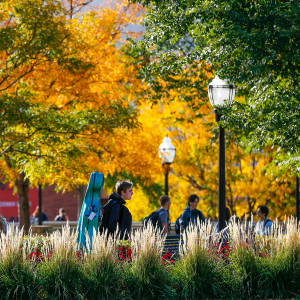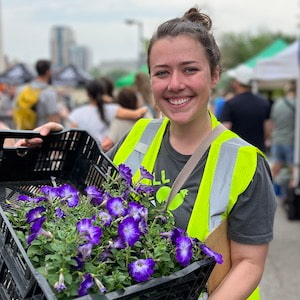Michael Barnes's Course Uncovers Hidden Connections
Why do we like certain flowers more than others? How many trees should a boulevard have? Which policies have the most impact on sustainability? The course Where People and Plants Meet: Social Dimensions of Horticulture (APS 5105, offered each fall) addresses compelling questions like these in a format accessible to students without a social science background.
The idea for the course was born when professor Michael Barnes was in graduate school studying the human elements of natural resources.
“All of us were doing human related stuff, but no one was talking about it in that discrete way,” he says. “So I wanted to create a class that made those human dimensions of horticulture, whether they're invisible or just overlooked, very visible.”
The Human Elements of Horticulture
This concept is especially relevant in horticulture, Barnes continues, because so much of the field is devoted to designing, breeding, marketing, and helping people take care of plants for human use. Horticulturists breed a new variety of grape for people to consume or turn into wine, for example, or breed a new type of flower for people to enjoy in their homes or gardens.
The class, which is an elective in the Master of Professional Studies in Horticulture program, explores three different levels of human and horticulture interaction. It looks at the psychology of horticulture, how a person's personality can dictate what kind of aesthetics they prefer.
This topic includes environmental psychology, which encompasses everything from individual behaviors related to sustainability to broader implications of climate change on humans. It also involves ecopsychology, which studies the relationship between humans and the natural world through ecological and psychological lenses.
The class also dives into the sociological aspects of horticulture, like social and cultural norms. For example, weeds don’t really exist. “Weeds” is a socially defined term; they only exist socially and culturally.
Finally, the class addresses policy and planning, how factors like city ordinances and urban planning can either facilitate the incorporation of nature or diminish it.
Who Should Take the Class?
Where People and Plants Meet is open to all learners. It is an ideal introduction to the intersections between people and plants for everyone, but particularly horticulture professionals.
“The choice of, do I want plants there or do we want a basketball court, is a fundamental thing that anyone involved in horticulture will have to navigate at some time,” he says. “It would be good if they were informed about some of the pitfalls or things that they might run into in their careers.”
It’s also important for horticulturists to understand that a person’s preferences—even if they go against horticulture recommendations—may be rooted in a psychological or a sociological basis that may be difficult to change.
The course would also benefit those in seemingly unrelated fields, like public health, sustainability, urban studies, or any area that impacts the way cities are designed. He hopes that students will leave with a basic understanding of how people engage with nature from psychological, sociological, and policy perspectives.
What Is the Class Like?
“In high school, what everyone else read about, I had to go do. Go into that pond and collect that sample, don't just read about it. Do the inventory of the birds in the forest. I've always wanted to engage and apply the work that I do, and that's why I love designing this class.”
Typically Michael will assign a reading, give a quick lecture for background, and then facilitate a discussion. He says the class is an “open forum,” where every student is welcome to freely express their opinions. Many of them already have a world of work and life experience, whether they're coming directly from undergrad or shifting careers, which leads to rich, layered conversations.
“We often ask students to set aside their experiences and listen to an expert,” he says. “I didn't want that for this class. I want students to be able to engage with whatever we're talking about on their own. It is meant to be a very unstructured space for students to explore things.”
As part of the class, students create a project proposal, with an emphasis on proposal. They don't actually do the thing, they just plan it. He wants to give students formalized time to explore topics that they might want to pursue. A few of his students have used their proposal as a jumping off point for their MPS in Horticulture capstone projects.
A Background Rooted in the Environment
Michael attended an environmental studies high school called the School of Environmental Studies, in Apple Valley. It sits on property owned by the Minnesota Zoo, and it was there that his love for environmental issues got started.
He went to the University of Minnesota Morris as an undergraduate and completed his graduate degree on the Twin Cities campus. He has been a full instructor for the past three years in the College of Food, Agricultural and Natural Resource Sciences. His work centers on wherever people and nature meet, then using that knowledge to inform ideas around design, sustainability, and health and well-being.
Recently, he’s worked in the turf grass lab under Eric Watkins on understanding the benefits of and human relationships with natural grass in urban areas. He has also done research on nature-based learning and teaches K–12 educators about how to bring those elements into their classrooms.
In the past, Michael has studied the connection between nature and mental health, specifically, what aspects of nature elicit benefits. He also explores seasonality, particularly around the under-studied topic of winter. His next project will be conducting surveys and interviews of people about how they define winter. Is it when your child’s winter sport starts? Is it a calendar date or the first snow? Is it the day after Thanksgiving?
There are individual disciplines studying the topics, but the sum of the knowledge tends to be isolated pockets of research. Michael wants to scientifically investigate winter because it is such a large part of our lives, especially here in Minnesota.
What Do You Like About Teaching?
“I love when I can see students connecting the dots between things in their life and career with whatever we're talking about. It is so satisfying, especially for me in this class, because it's kind of far out there for people to engage with.
"The other thing I love is when a student gets really fixated on one topic. I was that kind of student, too. Whatever gets you going, let's talk about it because this class is small enough where we can spend time going down individual rabbit holes.”
Photos: Courtesy of Michael Barnes except where noted

